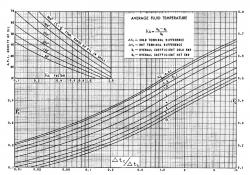Thermo-physical properties, which are used in Design problems of many equipment are a function of Temperature.
Now there is this one fact (I m not confirm about it) that while designing a Heat Exchanger if delta T is greater than 50 degrees then we cannot use arithmetic mean Temp of In and Out Temp and we have to use Caloric Temperature Correction.
1. Now What exactly is Caloric Temperature? and how can we apply this correction.
2. Also if there is linear relation of any property say Cp with temperature at constant API gravity, can we use simple average T for extracting thermo-physical properties for delta T > 50 ?
3. Can anyone provide me a clear scanned Figure of "Page 827 | Fig 17 - Caloric Temperature Correction | D. Q. Kern' Process Heat Transfer"

 FB
FB














